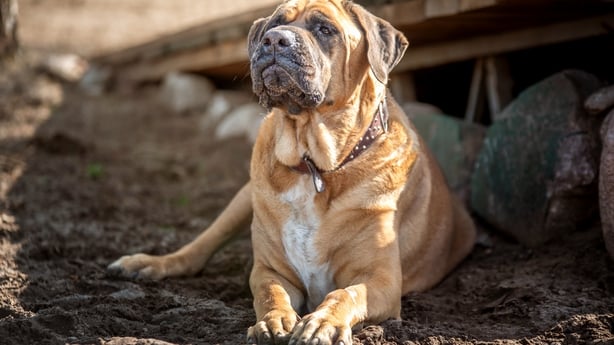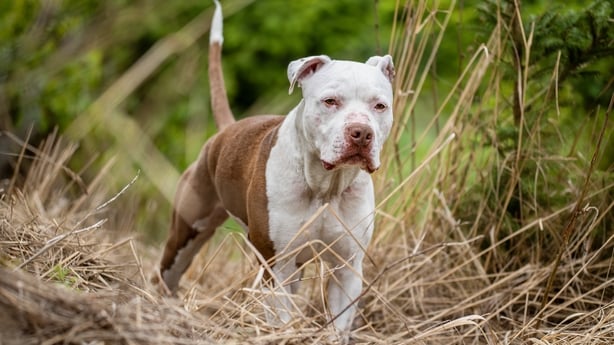World
Dangerous dogs debate gathers pace following fatal attack

Just over three years ago, three-month-old Mia O’Connell was attacked by a mixed-breed dog at her home in Clashmore in Waterford and, to the horror of her family and the wider community, died as a result of the injuries she sustained.
That incident sparked revulsion as well as much sadness but tragically, and as subsequent events have shown, it was not an isolated or rare occurrence.
While the dog that attacked Mia was not from a restricted breed, rather a family pet which had been rescued, it had to be destroyed.
What it did to Mia brought to the fore the dangers which can be posed.
Since that terrible bank holiday Monday in June 2021, more such dog attacks have taken place in different locations around the country.
Some have been worse than others, but all of them frightening and leading to injuries and, of course, in the case of Nicole Morey in Co Limerick earlier this month, leading to another death.
Ms Morey died after she was attacked by her own dog, an XL bully, almost three years to the day after the death of Mia O’Connell.
The various dog attacks in recent years have led to many calls for action, for tighter restrictions on dangerous animals, even for bans on certain breeds.
Many believe that a ban is on the way following Minister Heather Humphreys’s confirmation that she has asked the Attorney General to look at the legalities of such a move.
Up to now, the only concrete developments in this regard are some greater penalties for people who do not keep such dogs under control, more funding and awareness campaigns, and the establishment of a working group to look at what further measures can be taken to try to prevent such horrific attacks in the future.
The working group is chaired by a former deputy garda commissioner John Twomey, and includes what Minister Humphreys has described as “all the key players”, including representatives from the veterinary sector; local authorities; farming groups, and animal welfare experts.
The group is due to report back to the minister this autumn, and was asked in recent weeks to prioritise the issue of restricted breeds.
Minister Humphreys established the multi-agency group following another working group which was made up of officials from her department (rural and community development) and the Department of Agriculture; the County and City Managers Association; local authority dog wardens and veterinary inspectors, as well as representatives of An Garda Síochána.
That body recommended “substantially” increasing fines for anyone breaching the Control of Dogs Act; funding a neutering scheme for certain dogs; increasing the number of dog wardens around the country; and implementing a media campaign to encourage responsible dog ownership.
It was set up in 2022 after a number of incidents which came to public attention, including a shocking attack in Enniscorthy, Co Wexford, on nine-year-old Alejandro Mizsan.
Alejandro was out playing with his friends on a Sunday afternoon, 27 November 2022, when he was mauled by an XL bully on the green at Forgelands in the town.
He suffered severe and permanent facial injuries.

Two people have since been jailed as a result of that attack – the dog’s owner Karen Miller, from Forgelands, Enniscorthy, pleaded guilty to two charges of endangerment while her partner, Niall Byrne also from Forgelands, pleaded guilty to the inhumane destruction of an animal.
The dog involved in that incident in Enniscorthy was from the XL bully restricted breed, and not microchipped or registered.
The XL bully breed has come to prominence as a result of many of the recent attacks on people.
As a cross-breed from the American Pit Bull Terrier, it is one of 11 restricted dog types and their cross-breeds in this country. No dogs are currently banned.
Others which are restricted, which means they must be muzzled when walked in public, kept on a short leash and controlled by someone over the age of 16, include: the English and Staffordshire bull terriers; bull mastiff; Dobermann pinscher; Rottweiler; German Shepherd (also known as an Alsatian); Rhodesian Ridgeback; and Japanese Akita and Japanese Tosa.
In not banning any of these breeds, Ireland is not in line with Britain, where since February it has been a criminal offence to own an XL bully, for example.

Meanwhile, authorities in Northern Ireland are considering the introduction of similar measures for that breed, and have already banned some other breeds including pit bull terriers.
Just days ago, Minister Humphreys said that, as a dog-owner herself and someone from the border region, she does not think Ireland should be “out of step” with Northern Ireland on this issue.
“I am consulting with the Attorney General on how a ban on the XL bully would work in Ireland and what legislative changes may be required to give effect to this.”
The XL bully is at the centre of attention lately, simply because it was dogs of that type which attacked Alejandro Mizsan in Co Wexford, and also fatally attacked Ms Morey in Co Limerick.
It was also an XL bully which attacked two women in Waterford city last October, causing serious injuries.
That incident happened at a house in the St John’s Park area of the city and the dog was duly seized, but it prompted yet more calls for tighter restrictions, or even bans.
A pit bull terrier attacked two people in Ballyphehane in Cork City just days after the fatal XL bully attack on Ms Morey.

The pit bull had to be shot and killed by armed gardaí after it became aggressive, injuring a woman and then her son when he tried to intervene.
Two pit bull terriers were involved in another incident in Enfield, Co Meath, during the same week, when a man intervened when he saw a woman being attacked.
Both people suffered relatively minor injuries.
All of these incidents, and others, have led to a clamour of calls for “action,” with many people calling for certain breeds such as the XL bully and pit bull terrier to be banned outright.
Arguments against have also been aired, with those against bans calling for greater licensing and greater onus being placed on owners to ensure potentially dangerous dogs are controlled, and not allowed into a situation where they can cause injuries or deaths.

The report of the stakeholder group, due to be ready by autumn, will be the focus of much attention, particularly given recent comments by the minister, and the fact that she has also consulted with the Attorney General regarding the implications of a ban on some breeds and has asked that group to prioritise its examination of restricted breeds.
Some countries such as Denmark and France, as well as Britain, have already implemented bans to some extent or other, but the minister has said that, with regard to all of the legalities, “it’s important we get this right”.
Whichever way the Government decides to move on the issue of dangerous dogs, and what if anything to do with them, it looks set to cause division.










